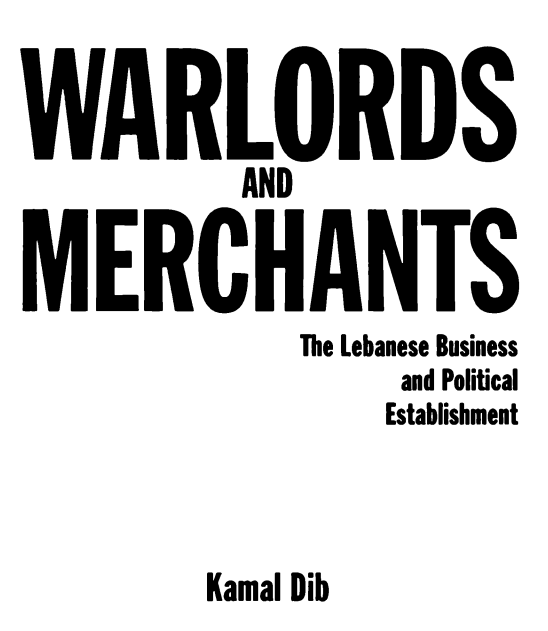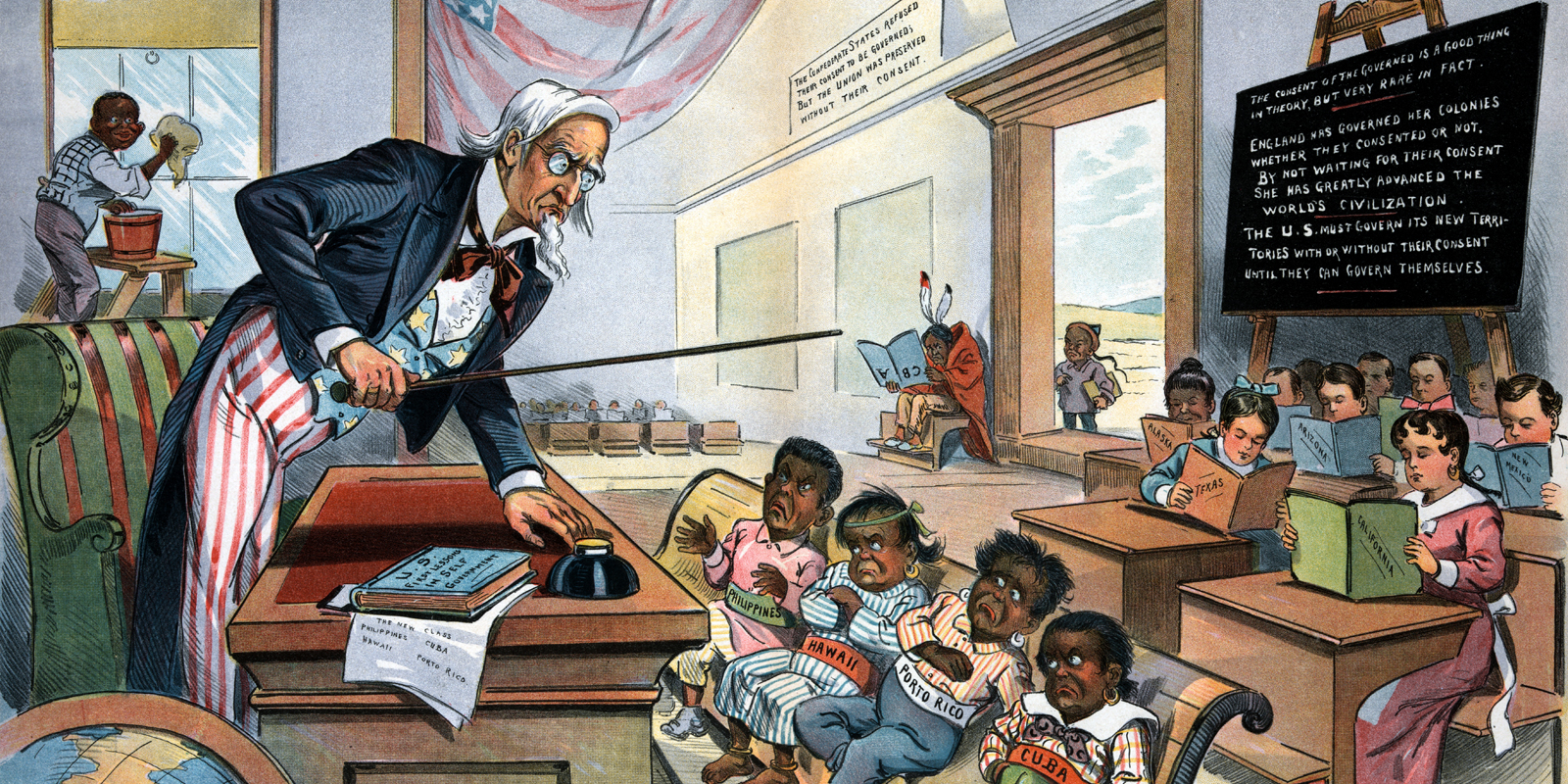
The Collapse of Intra Bank and Its Impact on Lebanon’s Economy
The collapse of Intra Bank remains one of the most defining events in Lebanon’s modern economic history. Once the Middle East’s largest financial institution, its downfall in 1966 sent shockwaves through Lebanon’s financial sector.
Beyond its immediate repercussions, the collapse revealed deep issues within the country’s socio-economic and political systems.
Drawing on Kamal Dib’s research and his seminal book Warlords and Merchants, this article explores the history, causes, and consequences of the Intra Bank crisis. By unpacking this event, we uncover critical lessons on risk management, corruption, and Lebanon’s enduring dynamics of power and finance.

Understanding the Foundations of Intra-Bank
Founded in 1951 by Palestinian banker Yusuf Baidas, Intra Bank quickly positioned itself as a revolutionary financial institution. With roots in Jerusalem, Baidas relocated to Beirut following the Arab-Israeli conflict in 1948. He turned Intra into a banking powerhouse using innovative strategies and a sharp business mind.
Game-changing strategies included:
- Diversified investments include real estate, gold, and strategic businesses (e.g., Middle East Airlines and entertainment ventures).
- A reputation as a haven for Arab oil wealth, attracting deposits from Gulf nations and wealthy individuals.
- The innovative adoption of tailored financial services, such as unbureaucratic cash withdrawals for VIP clients.
At its peak, Intra Bank controlled 60% of bank deposits in Lebanon and had become a symbol of the nation’s financial prosperity. However, this rapid growth did not come without risks.
Kamal Dib’s Perspective on the Collapse
Lebanese-Canadian historian and economist Dr. Kamal Dib began investigating the intrabank crisis in 1995. His book Warlords and Merchants explores the pivotal role of financial institutions in Lebanon’s history and offers a groundbreaking critique of traditional narratives surrounding the intrabank collapse.
Deeb’s research challenges the widely accepted image of Baidas as an irresponsible and unethical banker. Instead, his findings reveal a more complex picture of political manipulation, systemic corruption, and entrenched elite power struggles.
Who is Kamal Dib?

Author Kamal Dib & Sergio Aoun at the Lebanese bookfair in Antelias, March 2025
Dr. Dib is a renowned scholar specializing in economic and social research. Over his career, he has published 20+ books, including a trilogy focusing on Yusuf Baidas, Roger Tamraz, and Rafik Hariri.
Through his work, he showcases the interplay between warlords, merchants, and the economic backbone of modern Lebanon.
His critical insight? Lebanon’s downfall was not from one man or bank but a systematic failure driven by greed, power struggles, and vested elite interests.
Causes of the Collapse
The downfall of Intra Bank did not occur in a vacuum. Understanding it requires examining the political, economic, and regulatory triggers that unfolded across Lebanon’s financial ecosystem.
1. Opposition from Elite Power Structures
One of the key triggers of the collapse was the opposition Baidas faced from Lebanese political elites and merchants. His rapid rise and commanding position in Lebanon’s banking sector fueled resentment among traditional power brokers who leveraged their influence to challenge Intra Bank’s dominance.
- Several elite families, wary of losing control over Lebanon’s economy, reportedly coordinated efforts to undermine Baidas.
- Evidence suggests that political figures pressured Gulf states to withdraw their deposits, intensifying liquidity pressures on the bank.
2. Risky Investment Strategy
Baidas’s ambitious vision for Intra involved significant investments in illiquid assets, including real estate, infrastructure, and cultural projects. These long-term investments created vulnerabilities.
While these ventures were visionary (e.g., Lebanon’s film industry and airline networks flourished under Baidas’s backing), they overexposed the bank to financial risk.
3. Lack of Regulatory Safeguards
Lebanon’s regulatory framework in the 1960s was highly underdeveloped:
- The Central Bank of Lebanon (Banque du Liban) was only founded in 1964, two years before the collapse.
- With minimal oversight in the banking sector, commercial banks operated with little accountability. Baidas’s growth strategy exploited these gaps.
- During the liquidity crisis, the government and central bank refused to provide Intra Bank with emergency funding, leading to its downfall.
4. Systemic Racism and Political Rivalries
Deeb brings attention to an often overlooked factor: Baidas’s heritage as a Palestinian in Lebanon. Lebanese elites labeled him as an outsider and used his ethnicity to discredit him. Such prejudice exacerbated distrust within the social and political classes of the time.
Consequences of the Collapse
The collapse of Intra Bank marked a turning point for Lebanon’s financial and economic systems.
Immediate Aftermath
- The failure of Lebanon’s largest bank resulted in widespread panic, with depositors rushing to withdraw their savings.
- The Lebanese government was forced to nationalize Middle East Airlines and other major assets owned by Baidas.
- Depositors lost millions, causing a sharp decline in public trust toward financial institutions.
Long-term Impacts
- Economic Shift:
The collapse pushed Lebanon’s banking sector into the hands of foreign agents, diminishing its standing as a global financial hub.
- Loss of Investor Confidence:
The Intra Bank crisis planted doubt in Lebanon’s ability to safeguard large investments. Over time, this distrust contributed to financial instability.
- Political Ramifications:
The incident cemented the control of elite networks within the banking sector, further entrenching cronyism.
Kamal Dib’s Critique of Historical Narratives
Dr. Kamal dismantles the simplistic narrative of Baidas as a reckless fraudster. He argues that the collapse of Intra Bank was orchestrated by a coalition of political and economic elites who saw Baidas as a threat to their dominance.
Key points in Kamal’s argument:
- The bank’s assets far outweighed its liabilities, making its bankruptcy declaration questionable.
- The rush to dismantle the bank obscured opportunities that could have stabilized it.
This revisionist approach underscores the systemic flaws in Lebanon’s economic model and highlights the importance of revisiting historical truths.
Lessons Learned
The Intra Bank collapse serves as a cautionary tale with important lessons for today’s financial institutions and policymakers:
- Transparent Oversight Matters:
Strong regulatory frameworks and early intervention mechanisms are key to preventing financial crises.
- Ethics and Inclusion:
Discriminatory attitudes have no place in markets. Diversity and fairness must underpin sustainable business ecosystems.
- Balancing Innovation with Risk:
While visionary investments are essential, they must be carefully balanced against liquidity and risk management.
Revisiting Lebanon’s Financial Crossroads
The collapse of Intra Bank shattered Lebanon’s image as the “Switzerland of the Middle East.” However, it also offers valuable insights into governance, regulation, and the intersection of politics and economics. Kamal Dib’s rigorous research forces us to confront uncomfortable truths and rethink historical narratives.
For Lebanese society today, the story of Yusuf Baidas and Intra Bank remains a powerful reminder that economic systems thrive on trust, equity, and strong institutions.
Without these pillars, even the most promising financial endeavors can crumble.
Sources/References
- Warlords and Merchants: The Lebanese Business and Political Establishment – Kamal Dib
- Lebanon’s Crossroads: Warlords, Merchants & Modernity | Kamal Dib – Afikra Podcast: https://www.youtube.com/watch?v=wUy61hyB9iQ&t=3230s
- Joseph Beidas; The Empire Of Antra And The Whales Of Money In Lebanon 1949 – 1968 – Kamal Dib

The Collapse of Intra Bank and Its Impact on Lebanon’s Economy
The collapse of Intra Bank remains one of the most defining events in Lebanon’s modern economic history. Once the Middle East’s largest financial institution, its downfall in 1966 sent shockwaves through Lebanon’s financial sector.
Beyond its immediate repercussions, the collapse revealed deep issues within the country’s socio-economic and political systems.
Drawing on Kamal Dib’s research and his seminal book Warlords and Merchants, this article explores the history, causes, and consequences of the Intra Bank crisis. By unpacking this event, we uncover critical lessons on risk management, corruption, and Lebanon’s enduring dynamics of power and finance.

Understanding the Foundations of Intra-Bank
Founded in 1951 by Palestinian banker Yusuf Baidas, Intra Bank quickly positioned itself as a revolutionary financial institution. With roots in Jerusalem, Baidas relocated to Beirut following the Arab-Israeli conflict in 1948. He turned Intra into a banking powerhouse using innovative strategies and a sharp business mind.
Game-changing strategies included:
- Diversified investments include real estate, gold, and strategic businesses (e.g., Middle East Airlines and entertainment ventures).
- A reputation as a haven for Arab oil wealth, attracting deposits from Gulf nations and wealthy individuals.
- The innovative adoption of tailored financial services, such as unbureaucratic cash withdrawals for VIP clients.
At its peak, Intra Bank controlled 60% of bank deposits in Lebanon and had become a symbol of the nation’s financial prosperity. However, this rapid growth did not come without risks.
Kamal Dib’s Perspective on the Collapse
Lebanese-Canadian historian and economist Dr. Kamal Dib began investigating the intrabank crisis in 1995. His book Warlords and Merchants explores the pivotal role of financial institutions in Lebanon’s history and offers a groundbreaking critique of traditional narratives surrounding the intrabank collapse.
Deeb’s research challenges the widely accepted image of Baidas as an irresponsible and unethical banker. Instead, his findings reveal a more complex picture of political manipulation, systemic corruption, and entrenched elite power struggles.
Who is Kamal Dib?

Author Kamal Dib & Sergio Aoun at the Lebanese bookfair in Antelias, March 2025
Dr. Dib is a renowned scholar specializing in economic and social research. Over his career, he has published 20+ books, including a trilogy focusing on Yusuf Baidas, Roger Tamraz, and Rafik Hariri.
Through his work, he showcases the interplay between warlords, merchants, and the economic backbone of modern Lebanon.
His critical insight? Lebanon’s downfall was not from one man or bank but a systematic failure driven by greed, power struggles, and vested elite interests.
Causes of the Collapse
The downfall of Intra Bank did not occur in a vacuum. Understanding it requires examining the political, economic, and regulatory triggers that unfolded across Lebanon’s financial ecosystem.
1. Opposition from Elite Power Structures
One of the key triggers of the collapse was the opposition Baidas faced from Lebanese political elites and merchants. His rapid rise and commanding position in Lebanon’s banking sector fueled resentment among traditional power brokers who leveraged their influence to challenge Intra Bank’s dominance.
- Several elite families, wary of losing control over Lebanon’s economy, reportedly coordinated efforts to undermine Baidas.
- Evidence suggests that political figures pressured Gulf states to withdraw their deposits, intensifying liquidity pressures on the bank.
2. Risky Investment Strategy
Baidas’s ambitious vision for Intra involved significant investments in illiquid assets, including real estate, infrastructure, and cultural projects. These long-term investments created vulnerabilities.
While these ventures were visionary (e.g., Lebanon’s film industry and airline networks flourished under Baidas’s backing), they overexposed the bank to financial risk.
3. Lack of Regulatory Safeguards
Lebanon’s regulatory framework in the 1960s was highly underdeveloped:
- The Central Bank of Lebanon (Banque du Liban) was only founded in 1964, two years before the collapse.
- With minimal oversight in the banking sector, commercial banks operated with little accountability. Baidas’s growth strategy exploited these gaps.
- During the liquidity crisis, the government and central bank refused to provide Intra Bank with emergency funding, leading to its downfall.
4. Systemic Racism and Political Rivalries
Deeb brings attention to an often overlooked factor: Baidas’s heritage as a Palestinian in Lebanon. Lebanese elites labeled him as an outsider and used his ethnicity to discredit him. Such prejudice exacerbated distrust within the social and political classes of the time.
Consequences of the Collapse
The collapse of Intra Bank marked a turning point for Lebanon’s financial and economic systems.
Immediate Aftermath
- The failure of Lebanon’s largest bank resulted in widespread panic, with depositors rushing to withdraw their savings.
- The Lebanese government was forced to nationalize Middle East Airlines and other major assets owned by Baidas.
- Depositors lost millions, causing a sharp decline in public trust toward financial institutions.
Long-term Impacts
- Economic Shift:
The collapse pushed Lebanon’s banking sector into the hands of foreign agents, diminishing its standing as a global financial hub.
- Loss of Investor Confidence:
The Intra Bank crisis planted doubt in Lebanon’s ability to safeguard large investments. Over time, this distrust contributed to financial instability.
- Political Ramifications:
The incident cemented the control of elite networks within the banking sector, further entrenching cronyism.
Kamal Dib’s Critique of Historical Narratives
Dr. Kamal dismantles the simplistic narrative of Baidas as a reckless fraudster. He argues that the collapse of Intra Bank was orchestrated by a coalition of political and economic elites who saw Baidas as a threat to their dominance.
Key points in Kamal’s argument:
- The bank’s assets far outweighed its liabilities, making its bankruptcy declaration questionable.
- The rush to dismantle the bank obscured opportunities that could have stabilized it.
This revisionist approach underscores the systemic flaws in Lebanon’s economic model and highlights the importance of revisiting historical truths.
Lessons Learned
The Intra Bank collapse serves as a cautionary tale with important lessons for today’s financial institutions and policymakers:
- Transparent Oversight Matters:
Strong regulatory frameworks and early intervention mechanisms are key to preventing financial crises.
- Ethics and Inclusion:
Discriminatory attitudes have no place in markets. Diversity and fairness must underpin sustainable business ecosystems.
- Balancing Innovation with Risk:
While visionary investments are essential, they must be carefully balanced against liquidity and risk management.
Revisiting Lebanon’s Financial Crossroads
The collapse of Intra Bank shattered Lebanon’s image as the “Switzerland of the Middle East.” However, it also offers valuable insights into governance, regulation, and the intersection of politics and economics. Kamal Dib’s rigorous research forces us to confront uncomfortable truths and rethink historical narratives.
For Lebanese society today, the story of Yusuf Baidas and Intra Bank remains a powerful reminder that economic systems thrive on trust, equity, and strong institutions.
Without these pillars, even the most promising financial endeavors can crumble.
Sources/References
- Warlords and Merchants: The Lebanese Business and Political Establishment – Kamal Dib
- Lebanon’s Crossroads: Warlords, Merchants & Modernity | Kamal Dib – Afikra Podcast: https://www.youtube.com/watch?v=wUy61hyB9iQ&t=3230s
- Joseph Beidas; The Empire Of Antra And The Whales Of Money In Lebanon 1949 – 1968 – Kamal Dib



